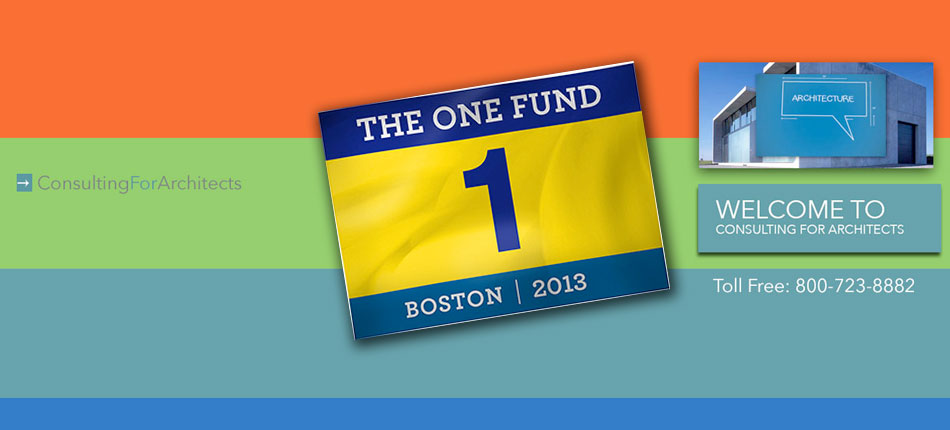
As you are climbing uphill; what seems like a continuous climb throughout the many hills of Parc Guell, you bravely steel a glance or two downwards and think that this is it. This must be one of the more beautiful experiences of your life. Gingerly you take each step with your camera in hand, careful not to drop the camera or anything else as you find yourself looking at, well, everything. It’s an overwhelming experience, and in a good way. Earlier in the year, my dad passed away, thereby making this my first vacation in a decade where I did not suffer from any family distractions. No worries, but did I ever miss him! I still do. But it was one less thing to ponder as I was transversing uneven stone steps with nary a handrail in sight. But I was just starting to speak of the beauty about this park, a must-see for anyone who travels to Barcelona, when I hit a few detours. Count Guell was a prominent businessman in Barcelona at the early part of the last century. He engaged a prominent architect, Antoni Gaudi, to design a garden city with sixty houses on a hill called Montana Pelada. The venture was not successful and only two houses were built. But an unsuccessful venture led way to one of the more beautiful parks you will ever see. At the entrance, you will find the main staircase with a dragon fountain made of broken bits of glazed ceramic tile, a signature style for Gaudi. This leads to the Salon of a Hundred Columns which really number eighty-four, but who cares? The ceiling of the salon has more tiled mosaics. In fact, they’re everywhere in sight. The on-site museum contains splendid furniture that Gaudi designed. And so it goes; you’ve walked for three hours, and have a big smile on your face. You can’t wait to tell the story to all you know.
You’ve planned a week in Barcelona because you are wise and know that you will not be bored for a second. You will want to come back. As you continue drinking in the various Gaudi shrines throughout this beautiful city, you get to understand a bit more about the architect with each building. Casa Batllo is truly amazing and I would suggest to go early in the day to avoid crowds. The details on the doorknobs and locks; the center court and other means of ventilation were ahead of their time. The rooftop dragon is not to be believed. Next up is Casa Mila, his iconic monument to the Modernist movement. It does not seem very livable, but once again, it’s all in the details. The Sagrada Familia is no problem for anyone familiar with waiting on lines at Disney. Wear comfortable shoes! If you are able to go to the top of the towers, then you are lucky for you will view this beautiful city in the most unique way and it is breathtaking.
Okay, I lied. It’s not all about Gaudi. It’s also about the food. As I’m re-reading my diary, the secondary descriptions that do constant battle with architecture are of the fantastic food. As I read about the various meals of fish, meats and risotto, my mouth waters and I desire to savor them all over again. Since we are incapable of dining at 10:00 PM, we chose instead to have our main meals of the day at lunch and have a more casual al fresco experience in the evening.
I lied some more. It’s all about the walk. Ever since I was twenty and I traveled to San Francisco with friends, I have always made note of how compatible I am with the place I am visiting. San Francisco was fine but I quickly realized I couldn’t live with Californians. In Barcelona, at some point we stopped and thought, “could I live here?” Yes was the answer. It is walkable; it is friendly; it is safe and clean; it is modern; it is old. Barcelona is ideal. The week was brimming over with a travelogue of lists consisting of everywhere we ambled and places we didn’t quite get to at this time. Maybe, next time? Because there was so much good stuff that really good architects had the sense to design and get built all in walking distance of each other. More Gaudi, so much to see in the Gothic Quarter as you walk past what is left of a Roman aqueduct, the Picasso Museum and the Palau de la Musica Catalana (a music hall with a gorgeous stained glass ceiling). And then there’s Gehry’s Fish. Barcelona’s golden fish sculpture sits in Port Olimpic at the base of one of the tallest buildings in the city. Frank Gehry was commissioned to build the piece for the 1992 Summer Olympics and brought the city to the attention of the world! Wow!


A fictional tale about an architect and his career
The end came for William some 1,800 miles and 26 years from where it all began. It’s an all too familiar scene. The partners gather, you’re “invited” to join them in the conference room. Eschewing eye contact, you’re told what a great employee you are, how valuable your contributions have been but, alas, they have to let you go. Can we please have your keys?
Changing the world
I think all of us believe, as architectural undergrads, that we will be the next Frank Lloyd Wright, Corbusier, or, heaven forbid, Daniel Liebskind. The heroic image of the architect (Howard Roark?) resonates loudly as we work night and day developing architectural concepts that not only are going to one day save the world but more importantly land us a job at one of the “starchitect” firms who’s work pollutes the architectural press. From there it’s on to private practice, publication, national acclaim and turning down commissions that are not worthy of our talents. You want me to do what! Don’t you know who I am? Reality? There’s no time for that! Like an architectural ponzi scheme the monster must be fed, illusions must be maintained and the next generation of architects must be trained on the ashes of those that have come before.
Reality
The first taste of the real world for William, the newly minted apprentice, comes during the job search. That is when the disconnect to the real world makes its first appearance. What the architectural press does not report (or want anyone to know) is that the “starchitect” firms are built on what is essentially slave labor. “We do not pay as much as other firms and we do ask that you work day and night but when you leave here you will have the name or our great firm on your resume!” Think of what that will do for you career! Or you can work for a second-tier firm, one that actually has work built, where you may actually learn how buildings go together who will pay you a living wage but whose name you dare not mention at architectural seminars or cocktail parties. Aah, a crossroads. Didn’t Williams’ architectural education prepare him for this?
After many sleepless nights and endless coffee house discussions with friends about pursuing your craft versus earning a living William makes his decision. He splits the difference. He takes a position with a respected second-tier firm. They do good work, their drawings all look nice, they will pay him a decent salary and he could tell his friends who he work for.. I’ll cut my teeth here says Williams, than jump to the A list with my next move!
The caste system
Excitement builds, William is on his way now! This is when the disconnect to the real world makes its second appearance. He never believed it when he heard others say that it matters where you went to school. With my talent, it won’t matter! Aah, but it does!
There are three distinct education classes in the architectural profession; Ivy League (the perceived gold standard) private universities or, heaven forbid, state or city universities. (I know, I know, there are some good state schools out there, I just haven’t met any of those grads yet. Anybody out there a K-State grad?). In the mid-eighties William was an apprentice at a mid-size, nationally recognized firm in New York City. Not a “starchitect” firm but rather a trend follower that produced middle-of the road work. As a private university grad he thought he stacked up pretty well amongst his peers except for one small thing; his lack of an Ivy League degree.
That precluded William from ever landing a coveted “designer” position, (which would have allowed him to walk around the office with a black sweater on his shoulders and Corbu styled glasses hanging around his neck discussing the tenets of post modernism). Or from designing a three-story nursing home addition that neglected to consider that the existing buildings structural system may impact the design until a column showed up (pointed out by a state university grad) in the middle of the door entering the addition (on all three floors and the entire building had to be shifted to the right). From a Yale trained architect.
Instead, he was relegated to “project architect” status, producing construction documents while directing a team of drafters (again, state university grads). It takes a while before what is happening to you sinks in. You convince yourself its good experience, you’ll have your opportunity to design your own projects at your next job. So you jump ship, looking for the Holy Grail.
The Quest
The next job is always going to be different. After three or four jobs come and go the little voice in Williams head grows louder. I can do this! Look at all the idiots I’ve worked for! None of them were as talented as me. Maybe I should open my own practice. How hard could it be? Then I’ll be free to design what I want when I want it. I’ll show them! So he takes the plunge and starts his own practice.
The excitement is palpable. What’s so hard about this? He sets up his “studio”, hangs his licenses and private university diplomas on the wall and waits for the phone to ring. You convince yourself that you are different from the thousands of other firms providing the same services as you. Why is your firm better?
Because it’s yours!
The work starts to trickle in, run-of-the mill stuff but yours none the less. It won’t be long now! This may last or year or so, and the glow of the start-up is still burning. William pretends not to hear that little voice in his head. After a year or two, he’s still not doing the work he wants to do, still compromising, but hey, he’s got to put food on the table. This goes on for several years with varying degrees of success. Smaller projects are published, prestigious institutional clients are added to the firm roster and William becomes an “expert” in a project type that he didn’t even know existed prior to starting his practice. But the signature projects aren’t there, the ones that will land him on the pages of Architectural Record, and no matter how hard he tries the engine just won’t turn over. And there’s that voice again…
Reality Disconnect three
It starts to dawn on William that making a living working at architecture and creating works of architecture (or being able to look yourself in the mirror) are two separate things. “I’m not sure if it is the same in other professions but there is no correlation in architecture between talent and success” says William. Some of the more successful architects (in financial terms) that he has been associated with couldn’t even draw or think three-dimensionally. One would think that those attributes would be prerequisites for an architect, but a well trained low paid intern, tracing paper and a copy machine are adequate substitutions.
Perhaps you’ve heard of Jeff Foxworthy, the comedian responsible for the “You might be a redneck if….” comedy routines and joke books. You can do the same thing with architects says William. “You can make a living as an architect if….
-You are willing to compromise any values you may possess
-You have no problem with clients coming to you to “execute” their ideas (here’s a photo of another project we like, can you do this?)
-You recycle your designs (but change the corner roof hats to something “contemporary”)
-You have no problem undercutting your competitor’s 3-4% fee just to get the job
The Reversal
The architect hangs his hat on the adage ‘architecture is an old mans profession”. So we toil for years working for others or in our own practice waiting for the opportunity to show that we are not like the rest. We have talent damn it! It’s what keeps us going. And you would be surprised how long one can fool themselves thinking that the next one is going to be the one.
After several years in private practice, the little voice in Williams head starts to bellow. Is this all there is? Can I do this for another 25 years? He starts to think that private practice may not offer access to the once-in-a-lifetime commission he craves. Maybe it’s time to join one of those A-list firms? After all, look at all of the experience I have running my own practice? Who wouldn’t this expertise on their team? Well, as it turns out, pretty much nobody.
In the world of architecture leaving a private practice to once again become an employee is seen as an act of failure. Partners and principals distrust your motives, and staff can’t understand why anyone would want to give up working on their own to work for someone else. (I can understand that thinks William, it is a sentiment he shared as a young intern.) But he decides to give it a shot. “What else am I doing”, he thinks to himself? And then he realizes that after all these years nothing has changed. Architects are still being slotted based an educational bias, the people in charge don’t really have as much talent as him (if any at all) and the young generation of designers and architects leaves much to be desired.
William believes the profession has collectively suffered a death by a thousand cuts. Piece by piece our role of master builder has been dismantled. And we have no one to blame but ourselves. First it was construction management. What do we know about construction? We can’t possibly be committed to designing a project with constructability in mind, or seek creative ways to reduce a project’s cost without sacrificing functionality. Instead, we opened the door to having an intermediary injected into the architect-client relationship. What about energy efficient buildings? After all, before the “green movement” architects had been designing energy efficient buildings for thousands of years. As architects, what could we possibly know about the planning and design of “green buildings?. Obviously not much, as the profession sat idly by and lets LEED accreditation get fostered on ANYONE who can pass the exam. Need a green building designed? Call your neighborhood LEED accredited plumber!
Enlightenment
William comes to realize that clients view architects as nothing more than a commodity, a means to an end. There is no holy grail out there, no Fallingwater, Guggenheim Museum or clients with vision. Just the same get it done and get it out of here mentality. The fire in William is extinguished as he realizes that it is nothing more than what it is.
“Sometimes you get little opportunities to make a difference, over time maybe they add up to something. But you don’t see those projects as opportunities until they’re in the rear view mirror. That’s the problem with looking for the next best thing; you can’t always tell when it’s right in front of you. Maybe it’s just learning something about yourself, about what makes you tick. I don’t know, but I’ve got another 25 years or so to figure it out. I’ll get back to you. Now if you’ll excuse me, I’m wanted in the conference room.”
Don’t laugh this could happen to you….
This article was first published in 2009. It’s still relevant.
Robert Vecchione is an architect/designer and principal of the multidisciplinary firm Cobrooke Ideas-Architecture-Design (www.cobrooke.com).
And he is not William.











